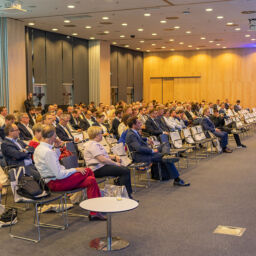A new draft act implementing Directive (EU) 2019/1158 of the European Parliament and of the Council of 20 June 2019 on work-life balance for parents and carers and Directive (EU) 2019/1152 of 20 June 2019 on transparent and predictable working conditions in the European Union has been published on the Government Legislation Centre’s website. The deadline to implement the Directives is August 2022.
The Directive aims to ensure a balance between professional and private life and to eliminate inequalities in employment. This is to be achieved by introducing measures to:
- make it easier for women to reconcile professional and family responsibilities;
- encourage fathers to take leave; and
- make the working arrangements of both parents more flexible.
The draft’s most important provisions in the sphere of work-life balance are:
- Time off for reasons of force majeure
An employee will be entitled to 2 days or 16 hours of time off per calendar year for reasons of force majeure. The time off will be available for urgent family matters caused by illness or an accident. During this time off, the employee is to retain the right to half pay. In the case of part-time employees, the amount of time off will be determined in proportion to the employee’s working hours.
- Carers’ leave
Employees will be entitled to a carers’ leave of 5 days per calendar year to provide personal care or support to:
- a family member (son, daughter, mother, father, or spouse); or
- a person living in the same household,
who requires substantial care or support for serious medical reasons.
Carers’ leave will be granted at an employee’s request submitted within 3 days prior to the start of the leave. The leave will be unpaid; however, its period will be included in the period of employment on which the employee’s rights depend.
- Additionally protecting the employment relationship
Employment protection will be extended to employees during pregnancy, maternity leave, paternity leave, parental leave, and employees covered by flexible working arrangements. Until the expiry of the period to exercise these rights, an employer may not:
- conduct preparations to terminate the employment relationship with that employee;
- terminate or dissolve the employment relationship with that employee (unless there are reasons justifying termination without notice due to the employee’s fault, and the company trade union organisation consents to the termination).
- Extending an employee’s period of rights to care for a child
Under the current regulations, an employee caring for a child under 4 years of age cannot, without their consent, be employed for overtime, at night time, in the interrupted working time system, or be delegated outside their permanent workplace. According to the draft, these rights are to be granted until the child is 8 years old.
- The electronic submission of requests
To facilitate the submission of requests, the following requests may be submitted in both paper and electronic forms:
- a request to take or renounce taking maternity leave;
- a request for parental leave;
- a request for paternity leave;
- a request for leave under conditions of maternity leave;
- a request for time off from work for employees bringing up a child under 14.
- Changes in taking parental leave
An employee who is a parent of a child will be entitled to parental leave of up to:
- 41 weeks – if one child is born; or
- 43 weeks – in cases of multiple births.
Parental leave will be granted irrespective of the prior use of maternity leave. Each parent will have an exclusive right to 9 weeks’ parental leave which cannot be transferred to the other parent. If it is not taken, that part of the leave will be forfeited.
Parental leave will be granted until the end of the calendar year in which the child reaches the age of 6. It will be possible to divide the leave into a maximum of 5 parts.
The duration of parental leave will be extended when an employee intends to combine parental leave with work. The maximum period of leave after the extension will be 82 weeks and 86 weeks respectively.
- Reducing the period for taking paternity leave
The draft provides that the period for taking paternity leave is to be reduced from 24 months to 12 months, counted from the day of the child’s birth.
- Flexible working arrangements at an employee’s request
An employee caring for a child under the age of 8 may apply for flexible working arrangements. Flexible working arrangements are defined as:
- teleworking;
- the intermittent working time system;
- the shortened working week system;
- weekend working system;
- flexible working hours;
- individual work schedule; or
- a reduction in working time.
An employer must inform an employee of the reason for refusing the request within 7 days of receiving it.













